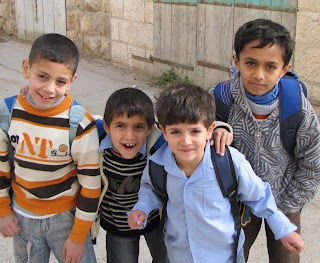 Over the course of many decades, peace groups have been branded terrorists by governments including my own. While I do not know of exact evidence, throughout my life, I have heard that government spies infiltrated groups like the American Friends Service Committee and other Quaker organizations in order to monitor their activities. Some of the stories even suggest that these government infiltrators have pushed peace groups to violence in order to validate later anti-activist governmental action.
Over the course of many decades, peace groups have been branded terrorists by governments including my own. While I do not know of exact evidence, throughout my life, I have heard that government spies infiltrated groups like the American Friends Service Committee and other Quaker organizations in order to monitor their activities. Some of the stories even suggest that these government infiltrators have pushed peace groups to violence in order to validate later anti-activist governmental action. While in Palestine in January, I heard a lot about the International Solidarity Movement (ISM). Their website describes ISM as:
The International Solidarity Movement (ISM) is a Palestinian-led movement committed to resisting the Israeli apartheid in Palestine by using nonviolent, direct-action methods and principles. Founded by a small group of primarily Palestinian and Israeli activists in August, 2001, ISM aims to support and strengthen the Palestinian popular resistance by providing the Palestinian people with two resources, international solidarity and an international voice with which to nonviolently resist an overwhelming military occupation force.
I met a few ISM activists and learned a bit about their work. What surprised me was that the Israeli government had begun to brand ISM activists as terrorists. Many people were told in leaving the country that they could not return for upwards of 10 years.
In speaking to other groups, I found out that the Christian Peacemaker Teams (CPT) faced similar problems. Several people, a few related to friends of mine, have been detained when entering Israel and deported back to the U.S. Surprising, when having lunch with Mark Regev, the Spokesperson for the Israeli Ministry of Foreign Affairs, Mr. Regev told us that he couldn’t think of a single reason why Israel (or anyone else for that matter) would think poorly of CPT’s work. It was one of many stories that didn’t match up.
When I was in high school I attended peace protests with my father. My father would walk with me through the streets of Washington D.C. giving me history lessons on the legacy of the peace movement and correcting young activists who were acting “inappropriately.” I wore black armbands to school and participated in days of silence. Over time, being an activist became a bit “too cool” and wearing peace signs re-entered the mainstream. I started asking myself: Are protests cliché? Do protests work? Are protests more for the activists or more for the cause?

While the recent Jasmine Revolution in Egypt demonstrates that protests of the people do work and create change, too often protests become antiquated and riddled with self-affirmation. Activists pride themselves at being at certain places at certain times: “I was there when so and so was killed” “Well, I’ve been gassed x-number of times” “Really? Well, I went in prison…” The conversation often results in a king of ‘one-upping’ the other and the actual reason for protesting is lost. Have we reached a point where it’s too cool to be an activist?
My friend Tory, whose studying in Palestine this semester writes in his blog:
The ISM (International Solidarity Movement) activists, a group of internationals who come here to participate in the Palestinian non-violent struggle, are usually on the spot. The protests around here, ranking from most well known, therefore the largest, with the most international and media attention, political showing from local PA members, and most peaceful: Bill’in, Nill’in, Sheik-Jara, Nab-i-Saleh. It’s weird to be ranking them like that, I suppose, I guess a little reminiscent of ranking concert venues or bars. Oh, Bill’in is cool I guess, I mean, if you’re into that sort of scene. Which is a sentiment I’ve vaguely heard out here, not verbatim of course, the Palestinian resistance hasn’t degenerated into a hipster contest to see who can find the most original place to get tear gassed and beaten by the IDF. Not yet anyway.
An then, as if to counter these questions, new activist groups get labeled terrorists and a very real struggle results which seems to enact that Beatitude verses “Blessed are the peacemakers… Blessed are the persecuted…” Then, as I see it, activism takes on a very new subversive appearance which is quite necessary in the world.
While I still struggle with the cliché, the boasting, 
Tory sums up another one of his entries pointedly:
As a Quaker, you have to believe peace is possible. You’ll go crazy otherwise, trying to work towards something which you don’t actually believe in or can imagine what that might look like. However, when our quest for peace involves quieting genuine conflict, in the name of saying, ‘Look, we made peace!’ then our efforts have been in vain. Refusing to criticize your friends as well as your foes won’t get you anywhere. Nothing is clear here. I don’t want to be the white kid who knows best about your country, but it’s hard not to call it like you see it. So you hunker down, drink tea, and watch the news.







